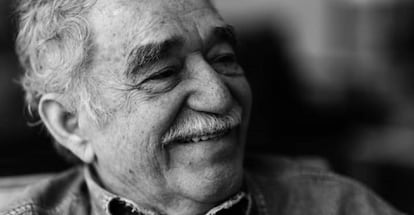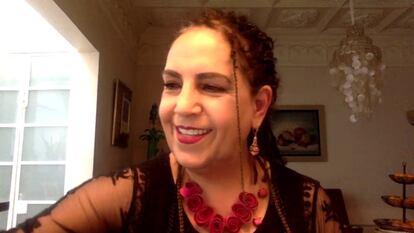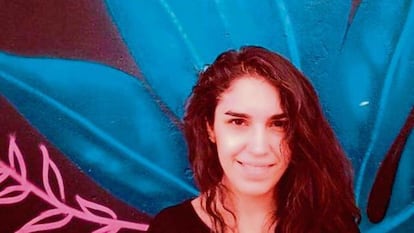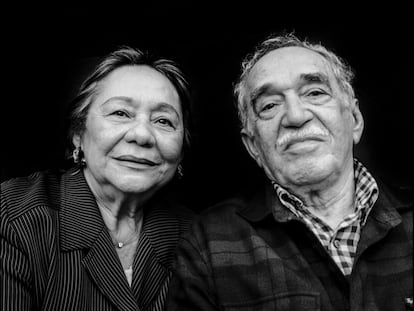Indira: Gabriel García Márquez’s final secret
The journalist who revealed the identity of the Nobel Prize winner’s hidden daughter relates how he discovered and confirmed the story with the help of the author’s biographer, Dasso Saldívar

The name of Indira Cato was going through my mind for years. On the day of Gabriel García Márquez’s death, on Maundy Thursday, during that April of brilliant light and omens near the ocean in San Antero, someone alluded to an unconfirmed rumor that the author of One Hundred Years of Solitude had a daughter, and that it was a closely guarded secret.
The rumor had traveled from Mexico to the Caribbean, later creeping like an unanticipated breeze into the Madrid apartment of García Márquez’s biographer, Dasso Saldívar, and the house of author Gerald Martin in London, as well as our own in Cartagena de Indias. It was a rumor that resurfaced suspiciously during García Márquez’s funeral and memorial at the Palacio de las Bellas Artes in Mexico City, and remained in the air like a wind that opens and closes doors, without bringing credible reason or verifiable information.
Dasso told me that, in the face of the rumors, a biographer’s duty is to scrutinize and decipher in order to discover the origin and veracity of the loose voices. Gerald Martin suspected something for over 30 years. And he became convinced of the truth around 10 years ago. It was a secret nobody dared to give voice to, not even those closest to García Márquez: his family and his friends. We have maintained conversations with Dasso since 2019, which became a secret pact to trace the fate of that little girl, test the reliability of the information and find the best way to tell her. Dasso was in agreement from the outset that I should be the one to deliver this monumental news. It was an overwhelming challenge.
A silence borne out of respect for Mercedes Barcha
Dasso confirmed the news thanks to Guillermo Angulo, the oldest of García Márquez’s surviving friends, who at 94 years of age still remembered well the day he met the young and gaunt writer – whose eyes displayed purple bags as testament to so much time staving off hunger in Paris while he was writing the novel about a veteran colonel grandfather of the Thousand Days’ War.

When I heard the name from Dasso and her family in Cartagena de Indias, Indira Cato resonated in my heart as a mystery to be solved. When I asked about Indira among relatives in Cartagena de Indias, they fell silent, and only in time did they reveal to me that she was the daughter of García Márquez. Nobody had wanted to give voice to this romantic relationship between the writer and the journalist and filmmaker Susana Cato “out of respect for [his wife] Mercedes Barcha.”
The revelation was an emotional cataclysm for Mercedes, but the García Márquez family welcomed her as one of their own when they heard from her. However, this warmth caused conflicts with Mercedes. Nothing of what happened could alter the splendor of the love that Mercedes and García Márquez had forged over 57 years of marriage, but Indira became the most closely guarded secret the writer and his family held.
Dasso suggested the news should be broken with subtlety and respect for the two families. He also recalled seeing a picture of García Márquez with the little girl in his lap. “The smile of happiness he had with the girl on his knees, I’ll never forget it,” he told me for the breaking of the report in El Universal de Cartagena. García Márquez had started out as a journalist at the same newspaper on May 21, 1948: the world coming full circle.
García Marquez’s student
Susana Cato, now 61, signed up for the screenwriting workshop that García Márquez taught at the International Film and TV School of San Antonio de los Baños in Cuba. She was one of his most gifted students, putting forward scripts for love stories. With her mentor and Eliseo Alberto Diego, she co-wrote Con el amor no se juega (Don’t play with love, 1991), directed by Carlos García Agraz, José Luis García Agraz and Tomás Gutiérrez Alea. She also created the plot for the short movie El espejo de dos lunas (The two-moon mirror), directed by Carlos García Agraz with a screenplay by García Márquez.
As a reporter for Cambio magazine in Mexico, Cato interviewed García Márquez and titled her article: In Colombia, a writer has no choice but to change his profession. She published two books in 2019 and 2020: Ellas. Las Mujeres del 68 (They. The women of 68), a series of interviews with the women who lived through the social protests of that year in Mexico, and Issir. Retrato hablado de un migrante iraquí (Issir. Spoken portrait of an Iraqi migrant).
Indira’s train
The train serves to jog the memory. On seeing the documentary Llévate mis amores (Take my love with you), produced by Indira Cato, I feel that train is the same one that takes us from the Colombian river town Aracataca to the hearts of these Mexican women who, along the railway line, handbags of food to the hungry migrants looking out of the windows. When she learned about them, Indira Cato followed these charitable women, who give out what they don’t have enough of themselves, something more than food, for the smiles of the migrants. She knew that was where the hard-hitting documentary about everyday life lay.

Indira Cato has a profound and coherent social, ethical and esthetic vision of cinema. In 2020, she won a dozen awards for the production of Llévate mis amores, her first documentary, directed by Arturo González Villaseñor with a screenplay co-written by both. After studying Dramatic Literature and Theater at the National Autonomous University of Mexico (UNAM), she wrote movie reviews for online publication Butaca Ancha, took part in the second edition of the Coahuila Film Festival in 2020 and is now working on the documentary Las hijas del maíz (Daughters of the corn), about a group of midwives in Chiapas.
Indira carries her mother’s surname, Cato, and not that of her father, García Márquez. The two have forged their own destinies. Indira has never claimed her father’s surname, and he never publicly acknowledged her, but they maintained a loving paternal relationship in secret. In a way, García Márquez has not escaped the fate of his paternal ancestors: both his father and grandfather adopted their mother’s surname when they were not recognized by their fathers. His sons, Rodrigo and Gonzalo, are watching over her, says García Márquez’s nephew Gabriel Torres García, who notes that life sometimes is stranger than fiction: Indira studied alongside his nephew Mateo, son of Gonzalo García Barcha.
García Márquez, meanwhile, remained actively involved in her life until his death in 2014. In choosing a name for her, he ruled out Virginia, which had been on the edges of his conscience since the 1970s, and instead chose Indira, in honor of Indira Gandhi, who he met in 1983 and who was the first head of state to call and congratulate him when he won the Nobel Prize in October 1982.
Indira has a deep gaze, the stark black eyebrows of her father, and the piercing look of someone who can see straight through things.
Tu suscripción se está usando en otro dispositivo
¿Quieres añadir otro usuario a tu suscripción?
Si continúas leyendo en este dispositivo, no se podrá leer en el otro.
FlechaTu suscripción se está usando en otro dispositivo y solo puedes acceder a EL PAÍS desde un dispositivo a la vez.
Si quieres compartir tu cuenta, cambia tu suscripción a la modalidad Premium, así podrás añadir otro usuario. Cada uno accederá con su propia cuenta de email, lo que os permitirá personalizar vuestra experiencia en EL PAÍS.
¿Tienes una suscripción de empresa? Accede aquí para contratar más cuentas.
En el caso de no saber quién está usando tu cuenta, te recomendamos cambiar tu contraseña aquí.
Si decides continuar compartiendo tu cuenta, este mensaje se mostrará en tu dispositivo y en el de la otra persona que está usando tu cuenta de forma indefinida, afectando a tu experiencia de lectura. Puedes consultar aquí los términos y condiciones de la suscripción digital.









































